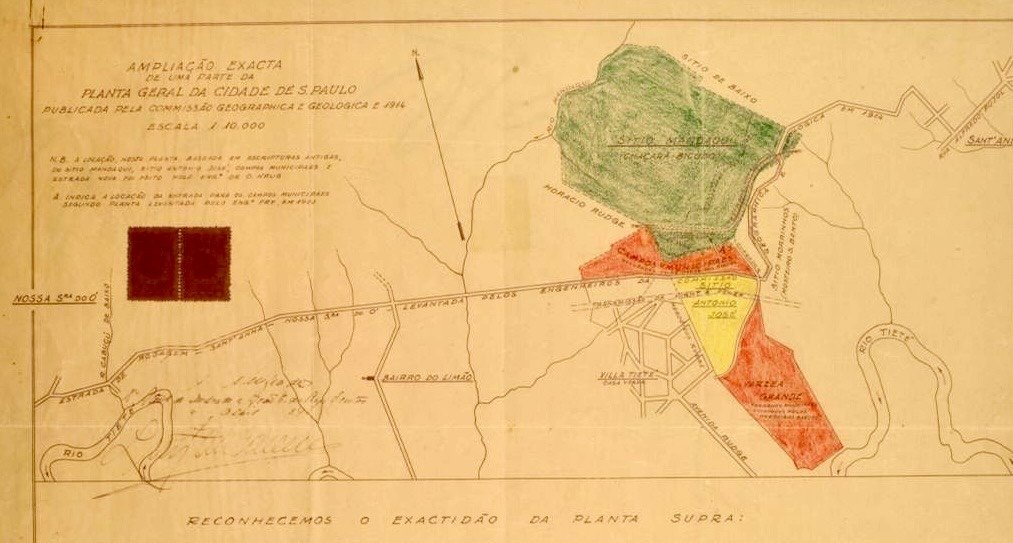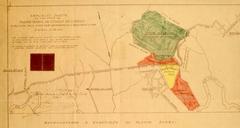
House of Sítio De Morrinhos: Visiting Hours, Tickets, and Comprehensive Guide to São Paulo’s Historical Sites
Date: 14/06/2025
Introduction
Nestled in the vibrant city of São Paulo, the House of Sítio de Morrinhos stands as one of the most significant cultural and historical landmarks in Brazil. This well-preserved rural estate offers a unique journey through time, revealing São Paulo’s transformation from Jesuit outpost and agricultural region to a bustling urban center. The site’s colonial architecture, particularly its taipa de pilão (rammed earth) construction, and the presence of the Centro de Arqueologia de São Paulo (CASP), provide visitors with an immersive experience into the region’s evolving heritage.
This guide delivers all you need to plan your visit: opening hours, ticketing, guided tours, accessibility, special events, and practical travel tips. Thanks to its convenient location and easy public transportation access, Sítio de Morrinhos appeals to history lovers, families, students, and those seeking authentic cultural experiences in São Paulo. Whether your interest lies in archaeology, architecture, or local stories, this site is a peaceful retreat brimming with educational opportunities.
For official visitor information and historical context, consult reputable resources such as the Museu da Cidade de São Paulo and travel guides like Lonely Planet.
Contents
- Discover Sítio de Morrinhos: A Historic Gem Among São Paulo Historical Sites
- Historical Overview and Architectural Evolution
- Visiting Sítio de Morrinhos: Practical Information
- Centro de Arqueologia de São Paulo (CASP): Hours, Tickets, and Insights
- Visitor Experience and Educational Programs
- Nearby Attractions and Visitor Tips
- Frequently Asked Questions (FAQ)
- Conclusion and Call to Action
- References and Further Reading
Discover Sítio de Morrinhos
Located in the Casa Verde/Jardim São Bento district, Sítio de Morrinhos is one of São Paulo’s oldest and best-preserved examples of colonial rural architecture. The estate invites visitors to explore centuries-old buildings and tranquil gardens, offering a window into the daily life and social fabric of colonial and imperial Brazil (Lonely Planet).
Historical Overview and Architectural Evolution
Early Origins
Dating to the late 17th and early 18th centuries, Sítio de Morrinhos was originally part of a Portuguese sesmaria land grant. The estate’s history is closely tied to São Paulo’s development as a Jesuit mission and agricultural hub, with the land passing through influential families who helped shape the region’s economy and society.
Architectural Features
The main house showcases taipa de pilão construction, a technique using compacted earth for thick, durable, and thermally insulated walls. Over time, the estate expanded with wooden beams, clay tiles, and lime mortar, maintaining a simple, rectangular layout with small shuttered windows. In the 18th and 19th centuries, additional structures such as slave quarters, animal pens, and workshops were built, some adopting sobrado (two-story) elements but retaining modest rural characteristics (Museu da Cidade de São Paulo).
Preservation and Revival
Urban expansion in the early 20th century led to the estate’s decline. Rediscovered and protected as a heritage site in the 1980s, Sítio de Morrinhos underwent significant restoration to stabilize its structures and open its doors as a cultural and educational center.
Visiting Sítio de Morrinhos: Practical Information
Location and Access
- Address: Rua Santo Anselmo, 102, Jardim São Bento, São Paulo, SP.
- Access: Easily reached via public transportation (closest metro: Santana, Blue Line) and bus routes; parking is available but limited (Wikipedia).
Hours and Admission
- Opening Hours: Tuesday to Sunday, 9:00 AM to 5:00 PM.
- Admission: Free for all visitors; no tickets required (SP City).
Guided Tours
- Languages: Primarily in Portuguese. Tours in other languages may be arranged with advance notice.
- Booking: Recommended for groups and non-Portuguese speakers; contact via email at [email protected] (Museu da Cidade de São Paulo).
Facilities and Accessibility
- Facilities: Restored colonial house, annexes, archaeological museum, gardens, and a specialized library.
- Accessibility: Most areas are wheelchair accessible; some historic interiors may have uneven floors. Contact the museum for specific needs.
Special Events and Photography
- Events: The site hosts workshops, lectures, exhibitions, and community events. Check the official calendar for updates.
- Photography: Permitted outdoors and in the library; restrictions may apply indoors.
Centro de Arqueologia de São Paulo (CASP): Hours, Tickets, and Insights
Overview
CASP, established in 2009 within the Sítio de Morrinhos complex, is a leading center for archaeological research and public education in São Paulo. The center preserves and displays artifacts spanning indigenous, colonial, and modern periods, providing rich insights into the region’s history (Museu da Cidade de São Paulo).
Collections
- Lithic tools from prehistoric settlements.
- Colonial ceramics and household items illustrating daily life.
- Architectural materials such as historic bricks and tiles.
- Personal objects (coins, buttons, glassware) revealing social history.
Visiting CASP
- Hours: Normally open Tuesday–Sunday, 9:00 AM–5:00 PM.
- Admission: Free; guided tours by appointment.
- Current Status: Temporarily closed for restoration and accessibility upgrades; virtual tours and resources are available online (Museu da Cidade de São Paulo).
Educational Programs
CASP offers rotating exhibitions, workshops, guided tours, and access to a specialized archaeology library. These programs cater to a wide range of visitors, including school groups and researchers.
Visitor Experience and Educational Programs
Site Layout
Spanning 20,000 square meters, Sítio de Morrinhos includes the main colonial house, annexes once used as slave quarters and workshops, and landscaped gardens with panoramic city views (Museu da Cidade de São Paulo).
Exhibitions
The permanent exhibition “Escavando o Passado” (“Excavating the Past”) features over 100,000 archaeological artifacts, with displays rotating from a collection of more than two million fragments. Interpretive panels and maps contextualize São Paulo’s transformation from indigenous villages to a modern metropolis (Wikipedia).
Educational Outreach
The site welcomes approximately 570 visitors monthly, many from schools. Guided tours, hands-on workshops, and lectures are available, with advance booking encouraged for group and educational visits. Community events and thematic exhibitions further enrich the visitor experience (SP City).
Nearby Attractions and Visitor Tips
Nearby Attractions
- Campo de Marte Park and the Marginal Tietê riverfront
- Jardim São Bento: local dining and neighborhood strolls
- Museu Paulista and Mosteiro de São Bento: complement your historical tour of São Paulo
Visitor Tips
- Best Times: Weekdays are quieter; visit during mild, less rainy months (March–May, September–November) for comfort (Nomadic Matt).
- Language: Most tours and signage are in Portuguese; consider a bilingual guide or translation app if needed.
- Amenities: No on-site café; bring your own snacks and water.
Frequently Asked Questions (FAQ)
Q: What are the visiting hours?
A: Tuesday to Sunday, 9:00 AM to 5:00 PM.
Q: Is there an entrance fee?
A: Admission is free.
Q: Are guided tours available?
A: Yes, especially for groups and educational visits; book in advance.
Q: Is the site accessible for visitors with disabilities?
A: Most areas are accessible; contact the museum for specific assistance.
Q: Can I take photographs?
A: Yes, especially outdoors and in the library. Some restrictions may apply indoors.
Q: Is CASP open to visitors?
A: Temporarily closed for restoration; check for virtual experiences and reopening updates.
Conclusion and Call to Action
Sítio de Morrinhos is a living monument to São Paulo’s layered history. Its preserved colonial estate, extensive archaeological collections, and dynamic educational programs make it a must-visit destination for anyone interested in Brazil’s past. With free admission, accessible hours, and a rich calendar of events, it offers a meaningful experience for all ages.
Plan your visit today and deepen your connection to São Paulo’s unique cultural heritage. For guided audio tours, downloadable guides, and the latest updates, download the Audiala app and follow Sítio de Morrinhos and CASP on social media. For additional resources and travel inspiration, consult the official sites and guides listed below.
References and Further Reading
- Lonely Planet: Guide to São Paulo
- Museu da Cidade de São Paulo – Sítio Morrinhos
- Museu da Cidade de São Paulo – Centro de Arqueologia de SP (CASP)
- Wikipedia: Sítio Morrinhos
- SP City: Sítio Morrinhos – Uma Experiência Histórica
- Casper Líbero: Fragmentos da História
- Capital SP – Notícias
- Nomadic Matt: São Paulo Travel Tips





































































































































































